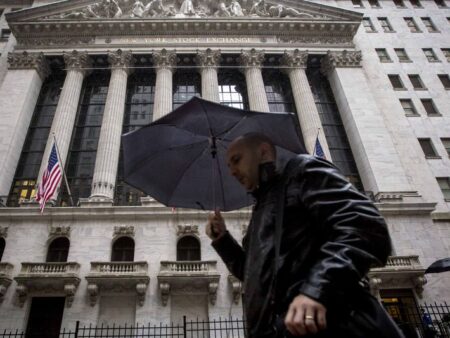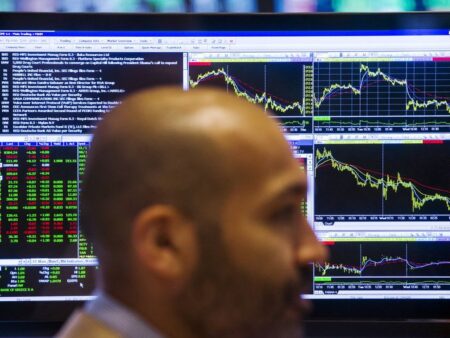Investing.com — The is poised for moderation in the coming year following back-to-back periods of above-average returns, as per analysts at Oppenheimer.
This anticipated slowdown aligns with historical trends observed after significant market rallies and reflects the evolving dynamics of bull market cycles.
The past two years have been exceptionally strong for the S&P 500, with gains exceeding historical averages.
However, the report flags that such sustained advances often lead to periods of reduced momentum.
Historically, when the index has recorded a 40% or greater cumulative return over two years, the subsequent year’s performance has typically been subdued, averaging just 3.7%, with positive returns seen in only half of these instances.
Oppenheimer noted that the S&P 500’s current position, about 27 months into a bull market that began in October 2022, is approaching the median duration of 32 months observed in past cycles since 1932.
While this does not suggest an immediate end to the bull market, it implies that the index may be nearing a phase of stabilization rather than continued robust growth.
Other performance studies underscore this outlook. Breakouts to all-time highs, like those seen in 2024, often lose their efficacy in driving gains in the second year.
According to Oppenheimer’s analysis, returns in the 12 to 24 months following such breakouts average just 1-2%, markedly lower than the historical average of 9-10%.
The brokerage’s year-ahead projection for the S&P 500 suggests a balanced outlook, with an expected return of 6% and a target level of 6,400, sitting between a bullish case of 6,700 and a bearish scenario of 6,000.
This reflects a mix of optimism for sustained growth and caution over potential moderation based on longer-term performance patterns.
While the risk of a market top appears limited in the immediate term—given robust internal breadth and the absence of significant warning signals—Oppenheimer emphasizes the importance of prudence.
They foresee a year characterized by corrections and consolidations rather than dramatic declines, which aligns with historical drawdown patterns in positive years.
On average, positive years have seen peak-to-trough declines of about 11% over nine weeks, contrasting sharply with more severe bear market conditions.
Source link

















